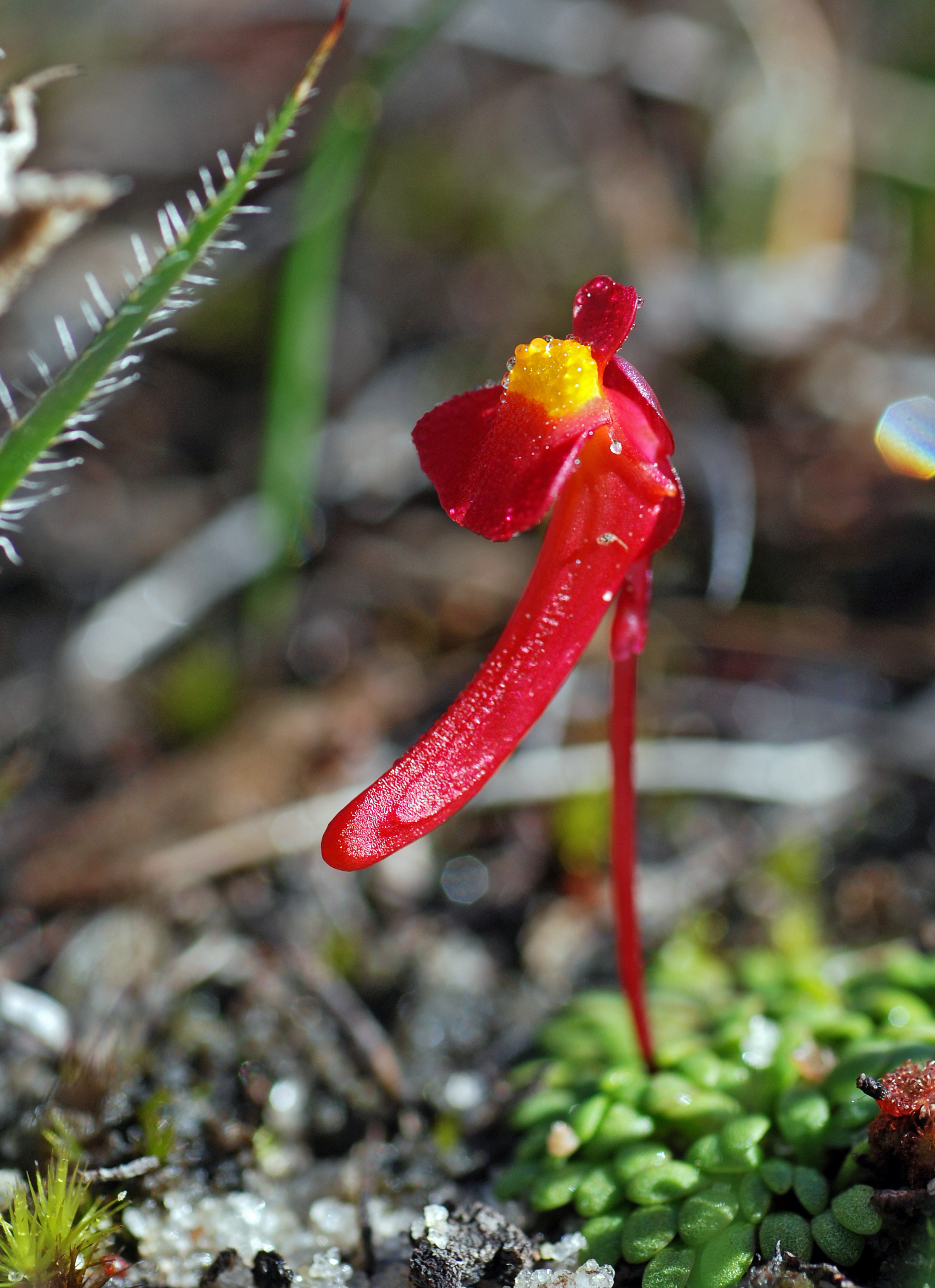Photo by Jean and Fred licensed by CC BY 2.0
Bladderworts are as beautiful as they are deadly. Though they are known the world over for their carnivorous bladder traps, their flowers are something to marvel at as well. Bladderworts flower in a range of colors from yellows to whites, purples to reds. What’s more, the variety of shapes and sizes among bladderwort flowers are incredible. Though the vast majority of bladderwort species rely on insects for pollination, at least one species appears to have co-opted a bird for its reproductive needs.
Red coats (Utricularia menziesii) are endemic to a few coastal regions of western Australia. They are not floating aquatic plants like many of their North American cousins, nor do they grow epiphytically like many tropical bladderworts. Red coats are terrestrial in their habit. Moreover, they live in habitats that dry up for good portions of the year. As the soils dry out, red coats die back into tiny corms in which they store energy during their dry dormancy that will fuel growth as soon as rains return and the surrounding soils are once again saturated.
Photo by Jean and Fred licensed by CC BY 2.0
When conditions are right, red coats produce some of the most spectacular flowers of the entire genus. Though other species also produce red flowers, few produce such outlandishly bright blossoms. Moreover, the flowers themselves are rather robust structures complete with a long, tough nectar spur. Their color, form, and proximity to the ground has led more than one author to suggest that birds, not insects, are the main pollinators of this species.
Indeed, it appears that birds are what these flowers are attracting. Not just any bird will do either. It seems that the western spinebill (Acanthorhynchus superciliosus) is wonderfully primed to pollinate this lovely little carnivore. Red is a major attractant for birds and the fact that red coat flowers are presented so close to ground level places at the perfect height for ground-foraging spinebills. Also, the length, curvature, and nectar content of the nectar spur fits the spinebill beak nicely. Birds approach the plants on the ground and dip their long, curved beaks into the flower, picking up and depositing pollen as they go.
The western spinebill (Acanthorhynchus superciliosus). Note the curved beak. Photo by Jean and Fred licensed by CC BY 2.0
This isn’t the only bladderwort to be suspected of bird pollination. At least two others (Utricularia quelchii & Utricularia campbelliana) have been hypothesized to utilize hummingbirds for pollination. However, there is scant evidence for this. Pollination studies can be tricky like that. Without proper observation and study, one simply can’t confirm a particular pollination syndrome.
Further Reading: [1]


